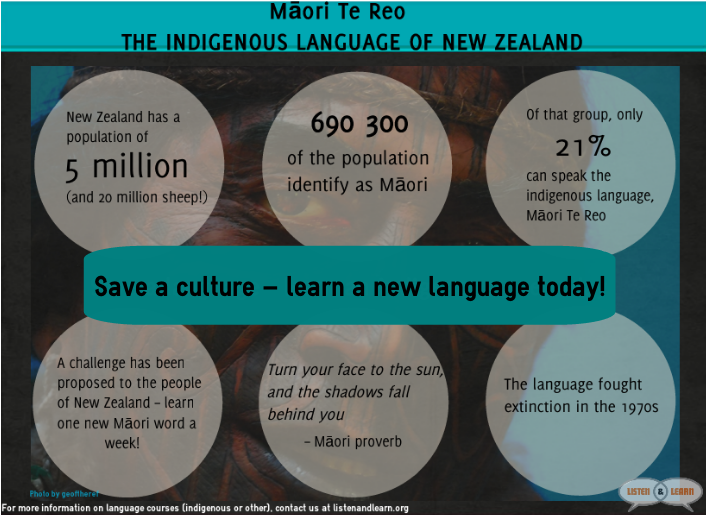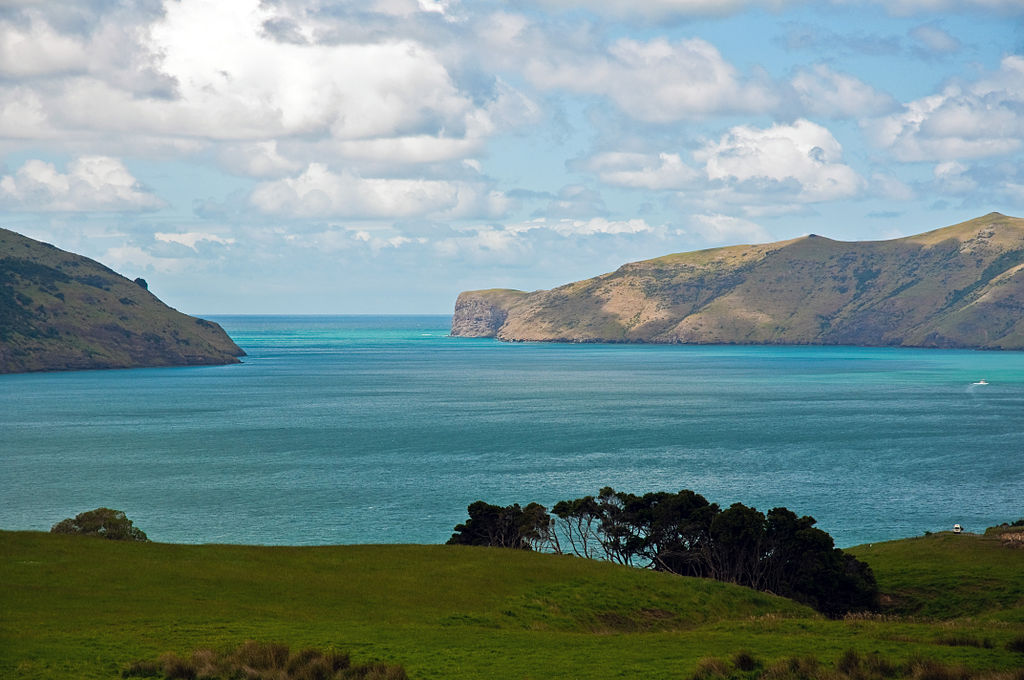Mind Your Own Language – The Fall And Rise Of Maori Te Reo
Any rugby fans around the world will know of the Haka, royal watchers will have seen a Hongi, and most Brits will have heard the greeting Kia Ora (or drunk the juice of the same name) – and here in New Zealand (Aotearoa), we’re proud that the indigenous Māori language (Te Reo) is still going strong…or is it?
Māori 101
Following European colonisation in 1840 the Māori language first showed signs of disappearing at the turn of the 20th century as schools were introduced and children were taught in English. Urban migration in the mid 20th century saw many Māori head to the towns for work, and the English language was key to their success and social standing.
The 1970s saw a change in attitude as Māori worried that their language was heading the way of the dodo, and initiatives and programmes were introduced to revitalise Te Reo. This included the introduction of a Māori TV channel and Māori language schools, and in 1987 the Māori Language Act made Te Reo an official language of New Zealand.
Today, in a country of five million people and 20 million sheep, 690,300 New Zealanders identify as Māori, and of that group 21% can speak Māori (Te Reo) fluently.
Indigenous Lingos
Although this number seems quite low, compared with other colonised societies, the indigenous language of Aotearoa (New Zealand) is relatively strong, and has managed to avoid linguicide (the death of a language) unlike many of its aboriginal counterparts.
Of the approximately 6,809 living languages that exist today only 100,000 people can speak 90% of them, some by just one individual, and it’s estimated that 6,100 of those languages are heading for extinction as the native speakers become extinct themselves.
The Politics of Te Reo
Of course the key to keeping a language going also relies heavily on education, and this year 4% of non-Māori secondary school students are learning Te Reo – which is a small improvement on the 3% of previous years.
With an election happening in September, Māori language is a popular topic, with the co-leader of the Māori Party, Pita Sharples, calling for Te Reo to be available in all schools but stopped short of saying it should be compulsory.
Similarly, the Labour Party announced their Te Reo campaign, reflecting Sharples’ views, and adding that policy needed to be introduced to encourage the use of the Māori language in schools.
Currently, the Education Act states that schools must offer Māori language courses if requested by parents.
Māori Language Week
As one of the official languages of New Zealand (English and Sign Language being the others), Māori is a large part of our society and culture, from road signs, to artwork, to everyday objects, place names, flora and fauna, and general conversation.
Large parts of the Māori language have been adopted by the settlers and are so immersed in our culture that we don’t even notice until we head overseas or have visitors to our shores, and they notice how much the two languages are mingled.
To highlight Te Reo, the country has just celebrated Māori Language Week, where most websites were in English and Te Reo, news items focused on the language, and a national challenge was laid down for all Kiwis to learn a Māori word a week, every week of the year.
Table of Contents
Photo by Phillip Capper
Māori Culture & Language
It’s not only the language that has become immersed in the European ways of New Zealand, but the Māori culture has had a heavy influence on this land down under!
Hongis (a greeting of rubbing noses), Hakas (a war dance made popular by the All Blacks), Kia Ora (greeting), Ka Pai (all good), Whanau (family), Mana (prestige), Koru (loop), and Wahine (women) are just a few of the many Māori words and concepts that are intermingled in daily chats and life all around New Zealand.
The Future Of The Māori Language
Unfortunately fluent speakers of Māori are comparatively few today, but 21% of Māori speaking their own language is a great improvement on the near extinction of the language in the 1970s – which is the path many other indigenous languages ended up taking.
As New Zealanders we are also aware of the importance of the indigenous tongue and culture for tourism purposes, which is one of the country’s biggest money spinners.
Language (indigenous or otherwise) is a vital part of keeping a culture alive – if you’re interested in learning anything from Arabic to Zulu contact us for courses in your area!




